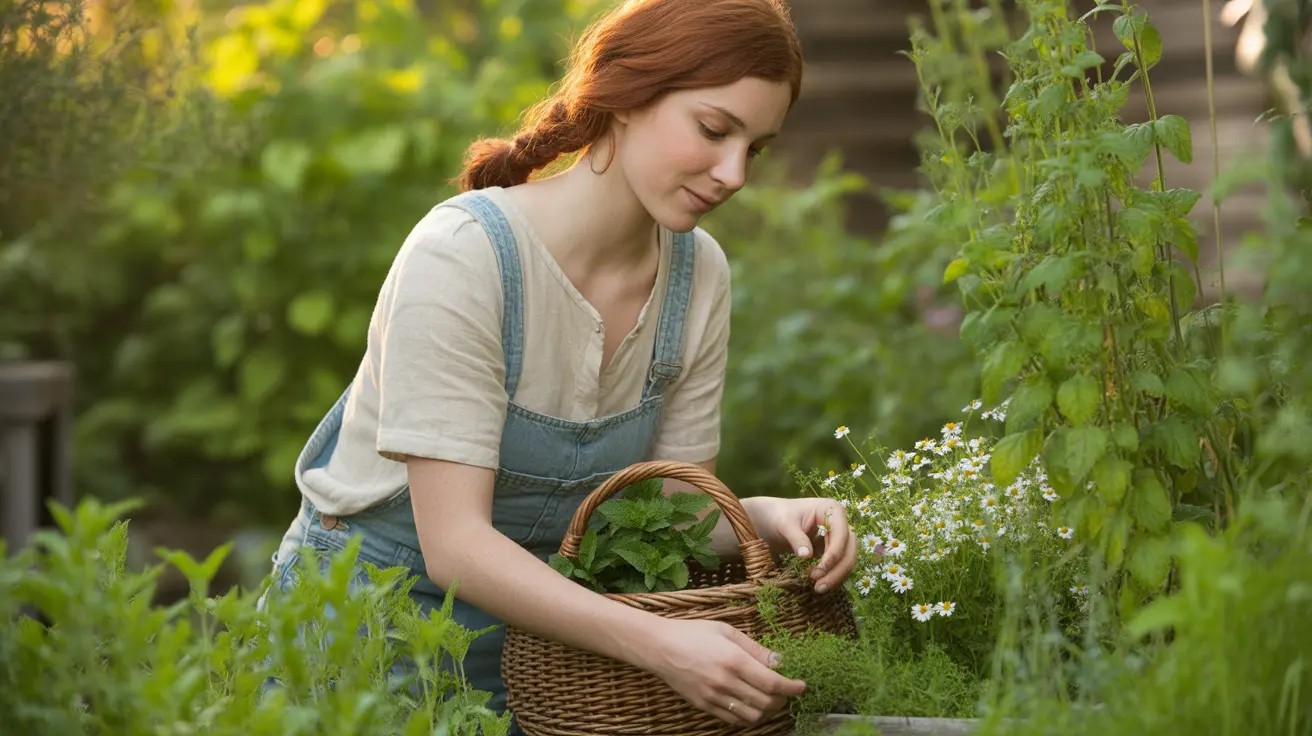The practice of growing and using herbal remedies has experienced a remarkable resurgence as more people seek natural alternatives for common health concerns. Creating your own herbal medicine garden not only provides ready access to therapeutic plants but also ensures you know exactly how your remedies are sourced and prepared.
Whether you're interested in brewing calming teas, crafting healing salves, or preparing natural treatments for common ailments, understanding how to cultivate and use medicinal herbs safely is essential. This comprehensive guide will walk you through everything you need to know about growing and utilizing herbal remedies effectively.
Essential Medicinal Herbs for Your Garden
Several powerful medicinal herbs are surprisingly easy to grow at home. Here are some of the most versatile options:
Peppermint for Digestive Health
Peppermint is renowned for its ability to soothe digestive issues and reduce nausea. This vigorous plant grows easily in partial shade and provides leaves that can be used fresh or dried for tea.
Chamomile for Relaxation
German chamomile produces delicate flowers that make a calming tea perfect for promoting sleep and reducing anxiety. This annual herb prefers full sun and well-drained soil.
Calendula for Skin Health
Calendula's bright orange flowers can be used to make healing salves and oils for skin irritations. This hardy plant blooms continuously through the growing season when regularly harvested.
Proper Cultivation and Harvesting Techniques
The medicinal potency of herbs depends significantly on proper growing conditions and harvest timing. Most medicinal herbs prefer:
- Well-drained, organic-rich soil
- 6-8 hours of sunlight daily
- Regular watering without oversaturation
- Adequate spacing between plants
Harvest herbs in the morning after dew has dried but before the heat of the day. For most leafy herbs, harvest just before flowering for maximum potency. Flowers should be collected when fully opened but not fading.
Safe Preparation Methods
Different herbs require specific preparation techniques to extract their beneficial compounds effectively:
Making Herbal Teas (Infusions)
Use 1-2 teaspoons of dried herbs or 2-3 teaspoons of fresh herbs per cup of boiling water. Steep covered for 5-15 minutes, depending on the plant and desired strength.
Creating Healing Salves
Infuse dried herbs in a carrier oil for 2-6 weeks, strain, then combine with beeswax to create a healing salve. Common ratios are 1 part beeswax to 4-8 parts infused oil.
Safety Considerations and Precautions
While herbal remedies are natural, they can be powerful medicine. Always observe these safety guidelines:
- Start with small amounts to test for individual sensitivity
- Research potential drug interactions before using any herb
- Avoid using herbal remedies during pregnancy without professional guidance
- Keep detailed records of which herbs you use and their effects
- Store dried herbs in airtight containers away from light and moisture
Frequently Asked Questions
- What are the most effective herbal remedies I can grow at home for common health issues like indigestion and skin irritations?
For indigestion, peppermint and ginger are highly effective. For skin irritations, calendula, plantain, and comfrey are excellent choices. These herbs are relatively easy to grow and can be used to make teas, tinctures, or topical applications.
- How do I safely prepare and use herbal teas, salves, and poultices from garden herbs like peppermint, chamomile, and calendula?
For teas, use dried herbs in hot water and steep covered for 5-15 minutes. For salves, infuse herbs in oil for several weeks, strain, then combine with beeswax. Poultices can be made by crushing fresh herbs and applying directly to the skin, covered with a clean cloth.
- Are there any safety concerns or potential drug interactions I should know about before using herbal remedies?
Yes, herbal remedies can interact with prescription medications and may not be suitable for everyone. Always consult with a healthcare provider before starting any herbal treatment, especially if you're taking medications or have chronic health conditions.
- Which herbs are best for promoting relaxation, sleep, and reducing anxiety naturally?
Chamomile, lavender, lemon balm, and passionflower are excellent for promoting relaxation and sleep. These can be grown easily at home and used to make calming teas or aromatherapy preparations.
- How can I tell when to harvest herbs for the strongest medicinal benefits, and what are the best methods for storing them?
Harvest herbs in the morning after dew has dried but before the heat of the day. For leaves, harvest just before flowering; for flowers, harvest when fully opened. Dry herbs thoroughly and store in airtight containers in a cool, dark place for up to one year.




